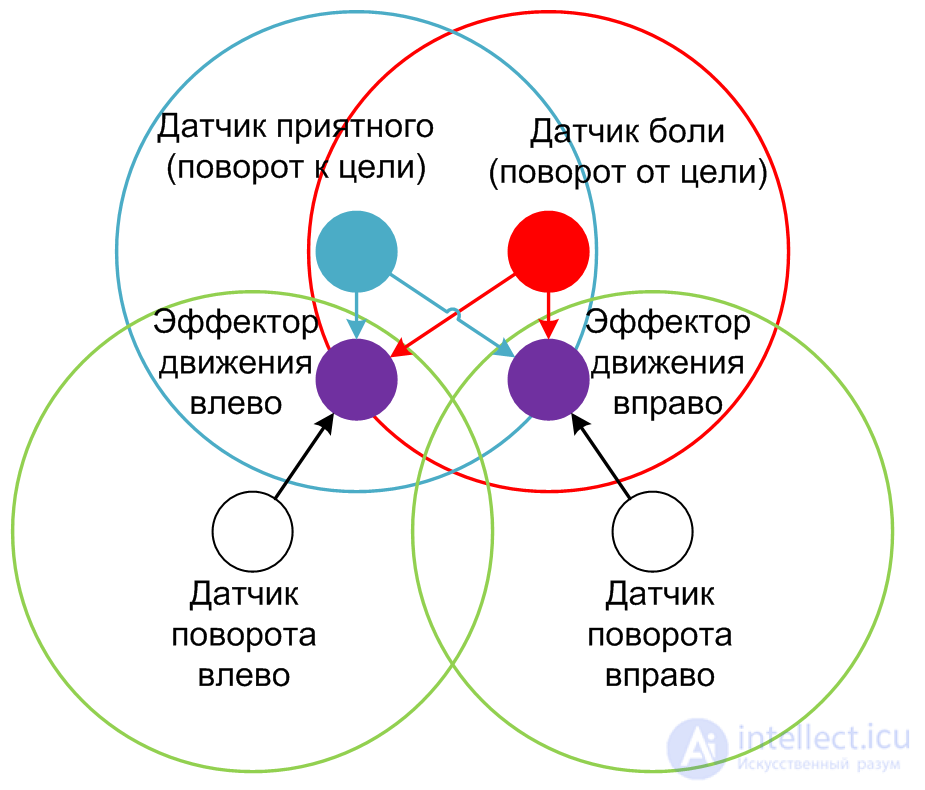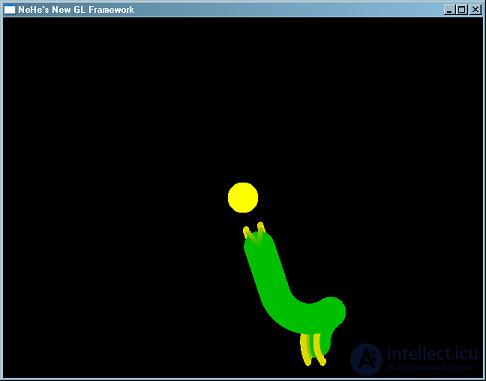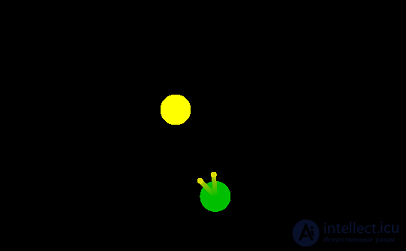Indulging in neural networks and self-learning algorithms for them, I was confronted with the idea that the learning algorithm with the teacher could well be categorized as self-study if teachers were replaced by “emotional” neurons. Such neurons, in fact, are simply “good / bad” sensors, and when connected to ordinary neurons, they create certain connections that suppress or excite depending on the type of sensor. This is an extremely superficial description of a principle that did not develop in neuroscience for two simple reasons.
1. Modern networks do not have simultaneous stability and plasticity, that is, the process of correct operation of the network is not compatible with its training. Modern networks, learning new things, successfully forget the old ones, so for work they use an unchangeable cast of a neural network after training, which doesn’t need to be managed.
2. The specificity of our requirements for the work network, even if it has simultaneous stability and plasticity, does not allow it to make mistakes, and it’s impossible to avoid this in training. Why ask us a system that not only can physically break, but also has something like the “human factor”?
I set myself the goal to create a model on the neural network to control the amoeba in a flat space, aiming to turn towards the goal and get to it. The task is very trivial, but the whole problem was that the amoeba should learn this by itself without my help. After all, when creating automatic systems, we still preset all the solutions for the entire set of conditions of that particular task that the automata will perform, and also do not allow the systems to learn in the course of their operation. In beautiful words, this can be described as: “The solution to the problem is not laid in the management system in advance; we are placing on the system not only the task, but also finding a solution to this task.”
We are so used to pre-deploying solutions in automatic systems that it is difficult to imagine an abstract model of a self-learning and self-finding automatic system solution. No need to step on the same rake, thinking that in the final we just need to tell in some form how to solve the problem. An automaton will ever be able to understand the information received from us and use other people's experience, but in reality we will have to start working with a system that does not yet have any skills other than the ability to learn, perceive the environment and act on it. It turns out from the usual automatic system, you need to immediately throw out a pre-embedded solution, and put into it a computing subsystem in which something like our brains is implemented. That's why I use the neural network, as the closest semblance of the brain.
But after the first meeting with such a machine gun, you will realize that he is a complete autist, a nihilist and the world around him is deeply indifferent. But we still need what he could, too, as before we threw out our embedded decision. I missed one important thing, forgot to set the condition for solving our task before the system. The system needs to be made to understand when its actions satisfy the conditions for solving our problem and vice versa. The central word here is the word “understand”, and it is the neural network that must “understand” what we want from it. Nothing special needs to be invented here, just a primitive repetition of the already existing, and yes, the “language of emotions” inherent in us. I’m not particularly going to talk about the only common “language of emotions” right now. I can only say that we all not only feel emotions, but also react to them in the same way, showing with our body language how we feel. What we will use is the carrot and stick method, because it works even with the simplest animals, implies the presence of emotional feelings that are pleasant and unpleasant (pain). We are endowed with a larger set of emotions than these feelings, but such a set is quite enough for the amoeba model and our task. Adding turn sensors to the goal, movement to the goal and vice versa, as well as adding emotional coloring to them, we explain the task and motivate the neural network to solve our problem.
This is a key moment for the neural network, since we are introducing a system of motivation and communication (at least we will be able to “contact” the amoeba). The behavior of our amoeba in an external observer will evoke a strong association with motivated behavior and the presence of emotional perception in it.
Further, the actual description of the device of neurons, sensors and the neural network as a whole is short, but rather difficult due to the lack of explanation for why. By reading is not required. You can read the findings.
Network device
The basic properties of the model of neurons that I use.
- The output of the result by the neuron is delayed by one cycle of the network. The main advantage is the ability to connect neurons at all somehow, because it does not bring errors into the network logic, first all the values of all the neurons are calculated, and then their outputs are updated.
- I use only two values at the output of the neurons "0" and "1".
- The output of a neuron can form a "negative" and "positive" synapse, so this synapse can also change its state from "positive" to "negative" and vice versa.
- The activation function is calculated as the difference between active positive and negative inputs. If the difference is positive, the result is “1”, if not, then “0”.
- A synapse tends to become “positive” if the result of the activation function is “1”, and “negative” only if the result is now “0”, and the previous result was “1”.
- The neurons are limited to the bonding zone, so the network's topology begins to play the role.
The neurons in my network are divided into several types.
- Sensors. Conventional sensors presented on the network only outputs.
- Effectors Motor neurons, exits control muscles, and in the network are represented only inputs.
- Emotional Sensors. It is the same as ordinary sensors, but they establish unchangeable connections, only of a positive or negative character, depending on the type of sensor and cannot change the state of these connections.
- The usual. I described them in my first article. It’s not necessary to think in the task, it is solved at the level of “conditioned reflexes,” so I don’t use them here.
The network is a two-dimensional space in which the position of the neurons is defined by coordinates, due to the limited responsibility radius, connections are established only between closely spaced neurons. At the very beginning, there are no connections between neurons at all. The effectors are arbitrarily activated until the first connections are established. Connections are established the faster, the closer and more often neurons are simultaneously active (Hebba rule). In the final, the topology looks like this.

Figure 1. The topology of the area of the neural network responsible for turns
Circles mark the areas of responsibility of the neurons. The same topology has a part of the neural network responsible for moving to the target. Both parts of the network are not connected.
findings
I did without memorizing normal neurons, I don’t need to think in the task, it is solved at the level of conditioned reflexes that appear, so here I don’t use them. The network topology played a central role in the solution of the problem, how neurons and sensors are located. It is very important how you prepare the neural network, actually set the task to be solved. Next, the amoeba makes attempts to move, connections are established between simultaneously active neurons, in the final emotion of pain and pleasant direct it towards the goal.

Figure 2. The path of the amoeba.
She turns around and crawls to the goal.

Figure 3. Screenshot.
And it looks like this with disabled tracing.



Comments
To leave a comment
Approaches and directions for creating Artificial Intelligence
Terms: Approaches and directions for creating Artificial Intelligence